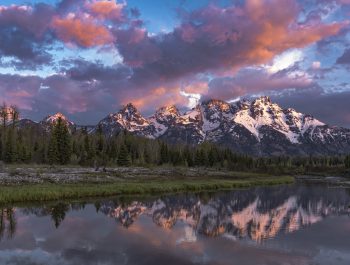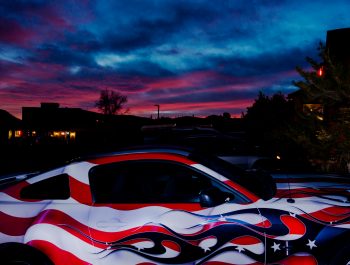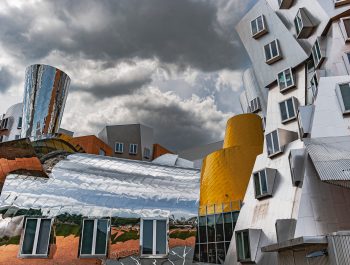Cityscapes: Ideas for the Urban-bound Photographer – Part Six
Part VI of a 6-Part Series by Harvey Stearn
Over my past 72 years of making photographic images, I viewed myself as a Nature photographer. Lately, I’m not so sure, as my photography evolved more broadly toward graphic art in rich natural color and monochrome images of subjects found in human environments and in Nature.
My photographic inventory includes many images made on impulse in cities visited during vacation travel. They have something in common with nature photography: they are graphic and colorful and often tell stories. They fit a lesser-known branch of photography called “Cityscapes” and, in many cases, also belong to an important specialty known as “Travel Photography.”
I organized this Cityscapes series into six groups to see if this would help readers select locations and material for their own art photography.
- Architecture and Skylines
- Coastal and River Cities
- Local Color
- Major Events
- Parks, Gardens & Public Places
- Urban Wildlife
Cityscapes Part VI – Urban Wildlife
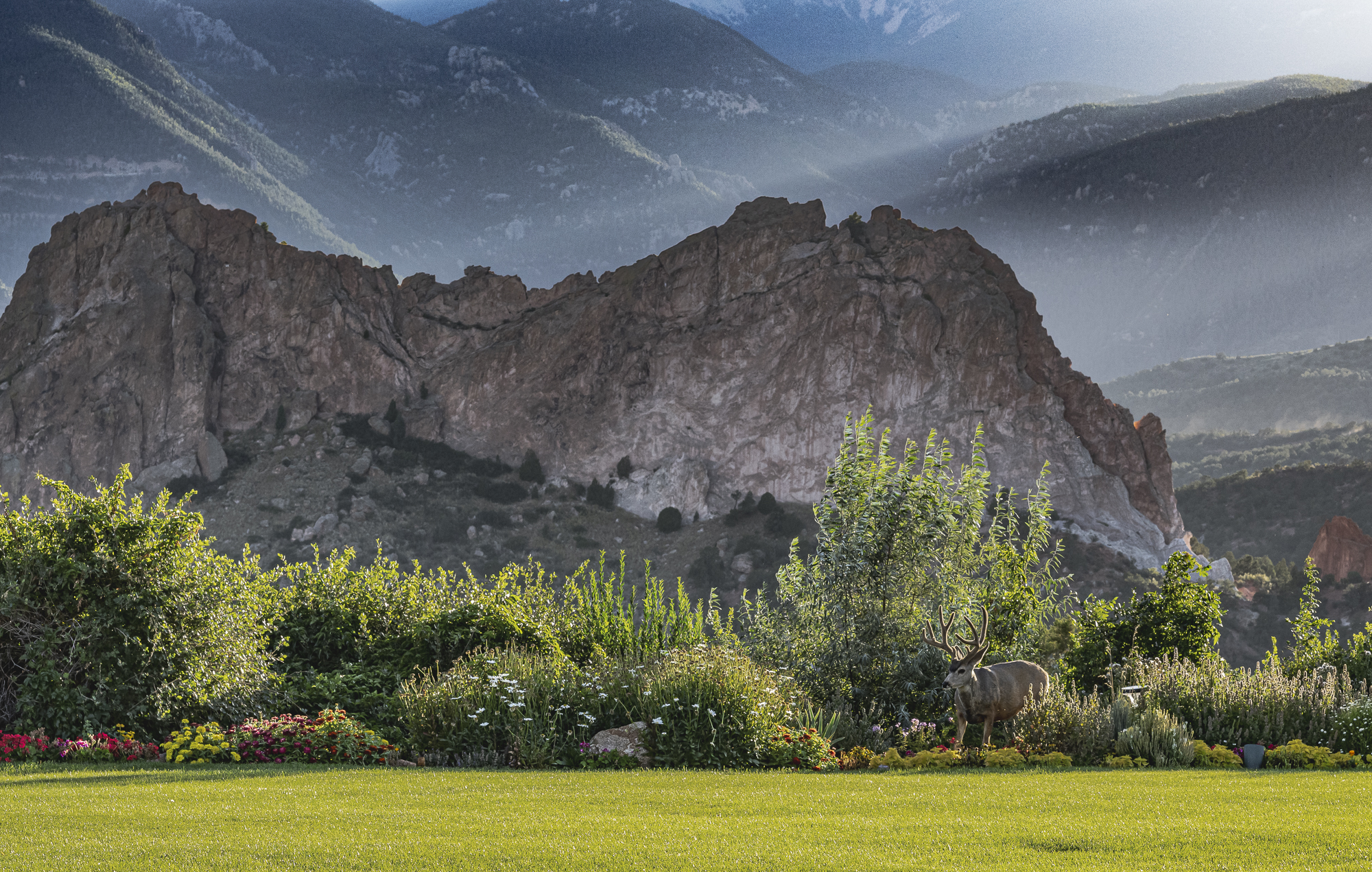
Despite the news items that regularly announce the intrusion of wild animals into busy city streets, the immediate reaction of most people that I’ve talked to on this subject is that urban areas and wildlife are incompatible. After thinking about this for a minute they concede that squirrels and birds are found in the suburbs and in city parks, and that small forms of wildlife can readily survive in less dense urban areas as well. Part of this prejudice is owed to the seeming paradox between wild and “developed”.
Another part is that this is not an issue to which they’ve given prior thought, and therefore have not noticed how well many species can adapt to a changed environment that once was part of their domain. If one points out numerous success stories people will remember reading something about it. But, while bears and cougars don’t mix well with people, it is still amazing how many species of wild creatures can find food and shelter, and successfully raise young in areas dominated by us humans. Not counting escaped exotic pets, New York’s Central Park hosts 210 species of wild birds. And in some more remote cities, bears have learned how to navigate them without triggering confrontations.
Since my preference for wildlife photography was to practice it away from human activity, I hadn’t paid much attention to this subject either – until my inventory of wildlife captures taken in urban locations started piling up. So, this final essay in this Cityscape series is devoted to Urban Wildlife.
Birds can fly to almost any city they want, so long as they can sustain themselves while traveling and at their destination, and they do. The following image is of a mated pair of Mandarin Ducks in San Diego’s Balboa Park. As the name implies, these ducks originated in China, and were imported to the United States where they became a part of the annual water-fowl migrations along the coastal western states. They’re not common. But they do just fine in cities.
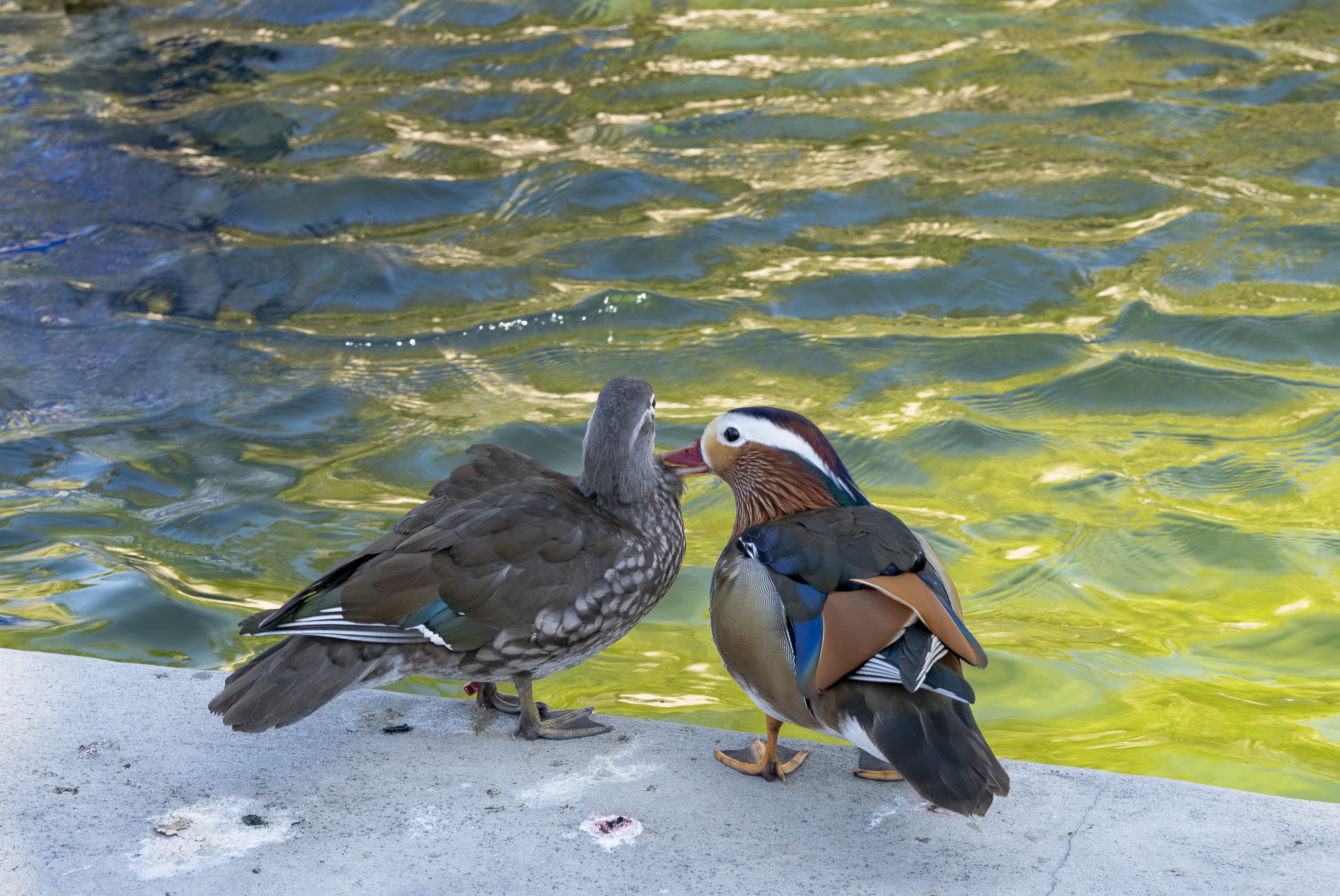
Also, at Balboa Park, an Egret flies in from a local estuary to supplement his diet.
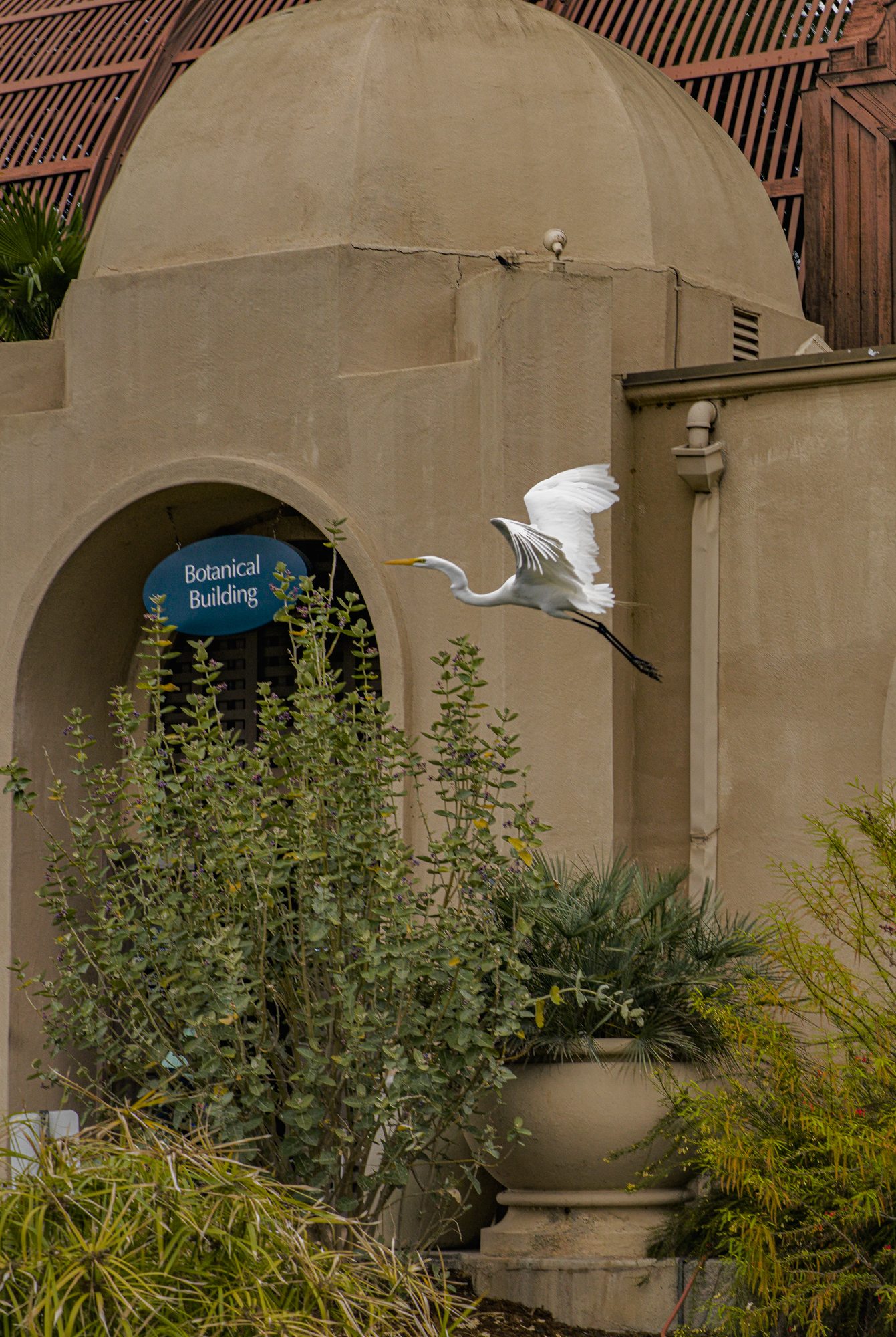
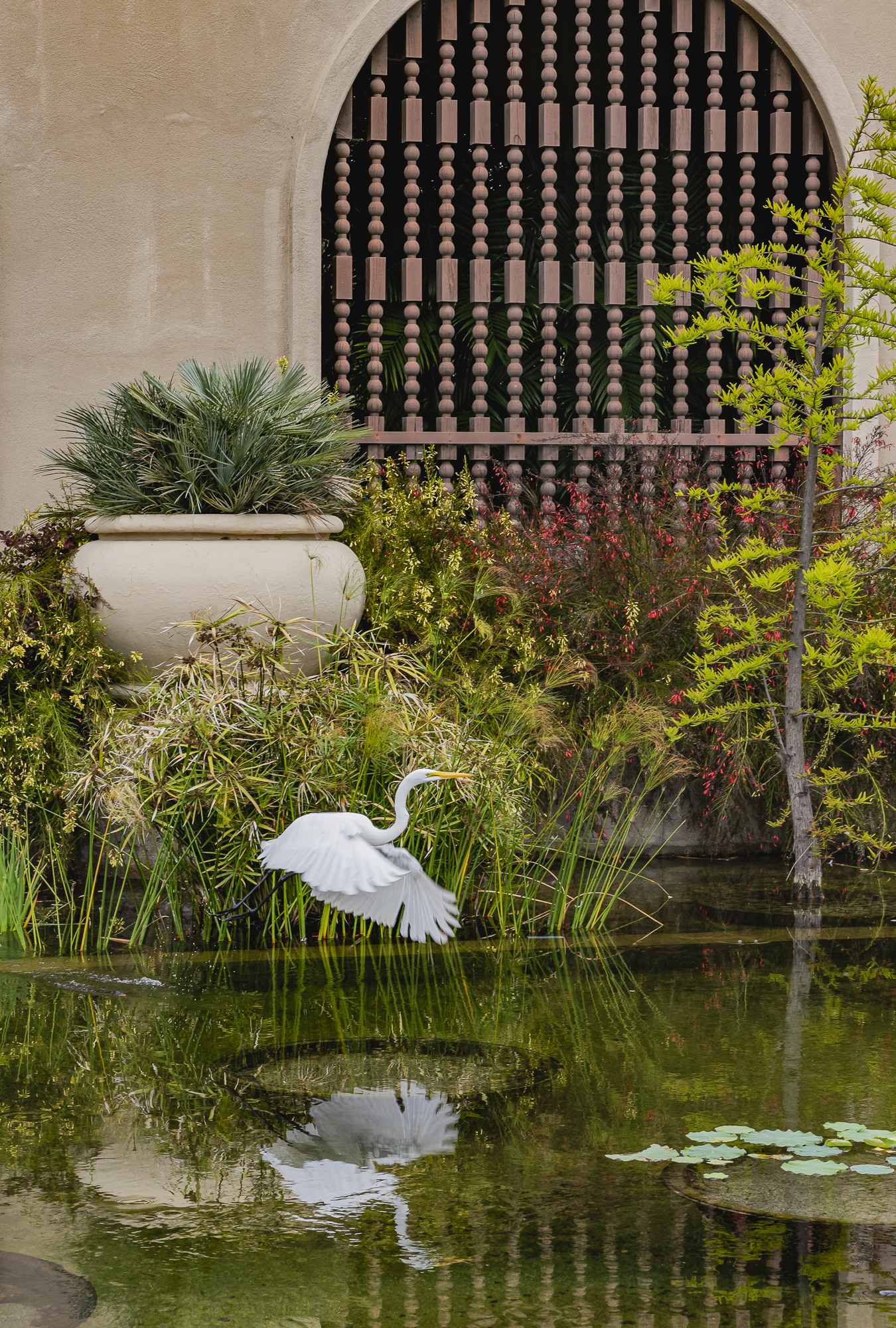
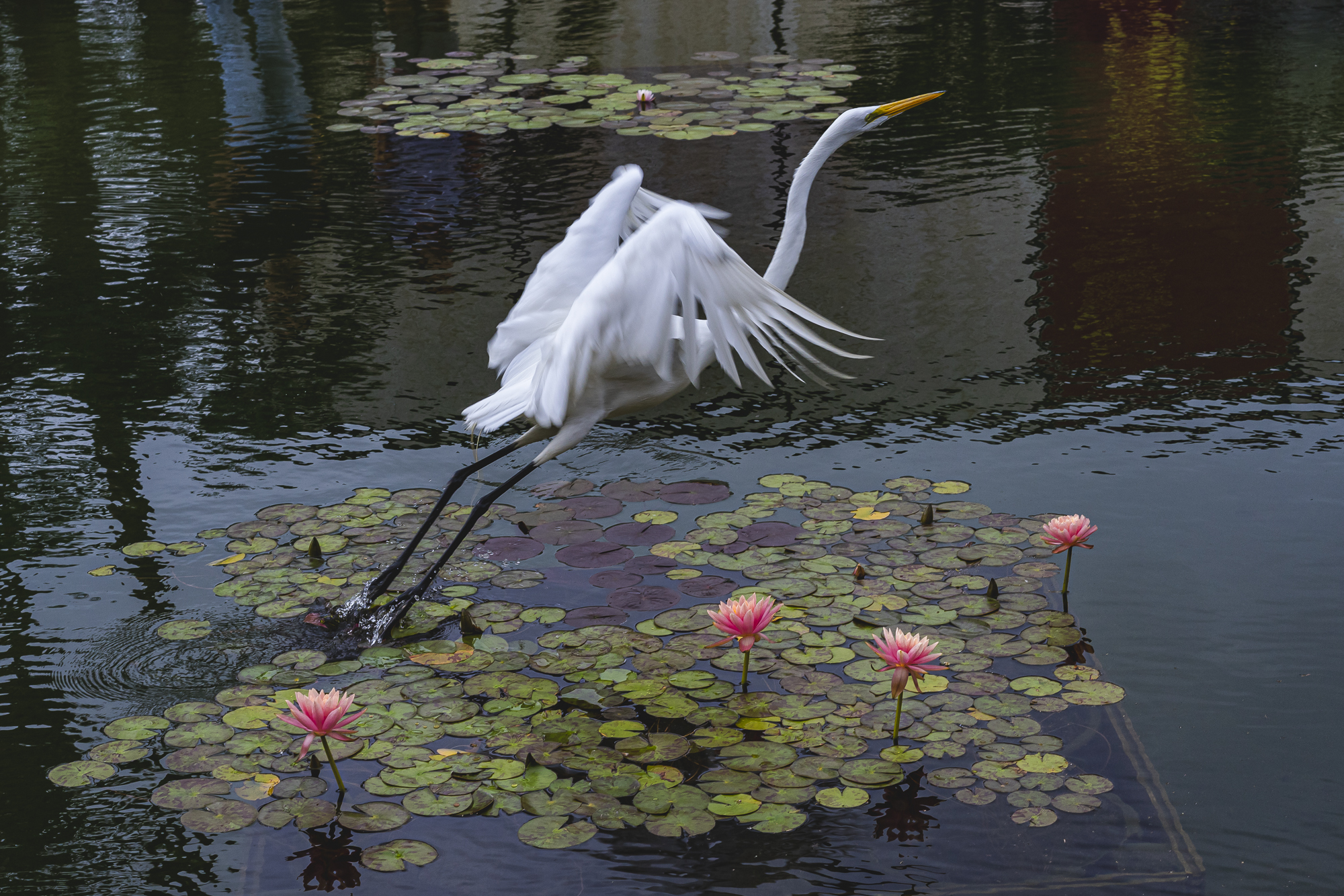
South Orange County in Southern California contains six planned communities (now all cities) known for parks and recreational facilities as well as for houses, schools, shopping, and light industry. Though I spent 20 years there developing the cities of Mission Viejo and Aliso Viejo in the 1970s and 80s, I haven’t spent much time there since 1995. The City of Laguna Niguel includes Laguna Niguel Regional Park which has a lake and streams that flow to the ocean. The park has matured into a significant byway for migrating waterfowl, particularly Canada Geese. I didn’t know this until my daughter suggested that we spend a day there. I was absolutely amazed by the abundance of geese, including over 100 chicks.
But what caught my eye was a young egret hunting in one of the waterways.
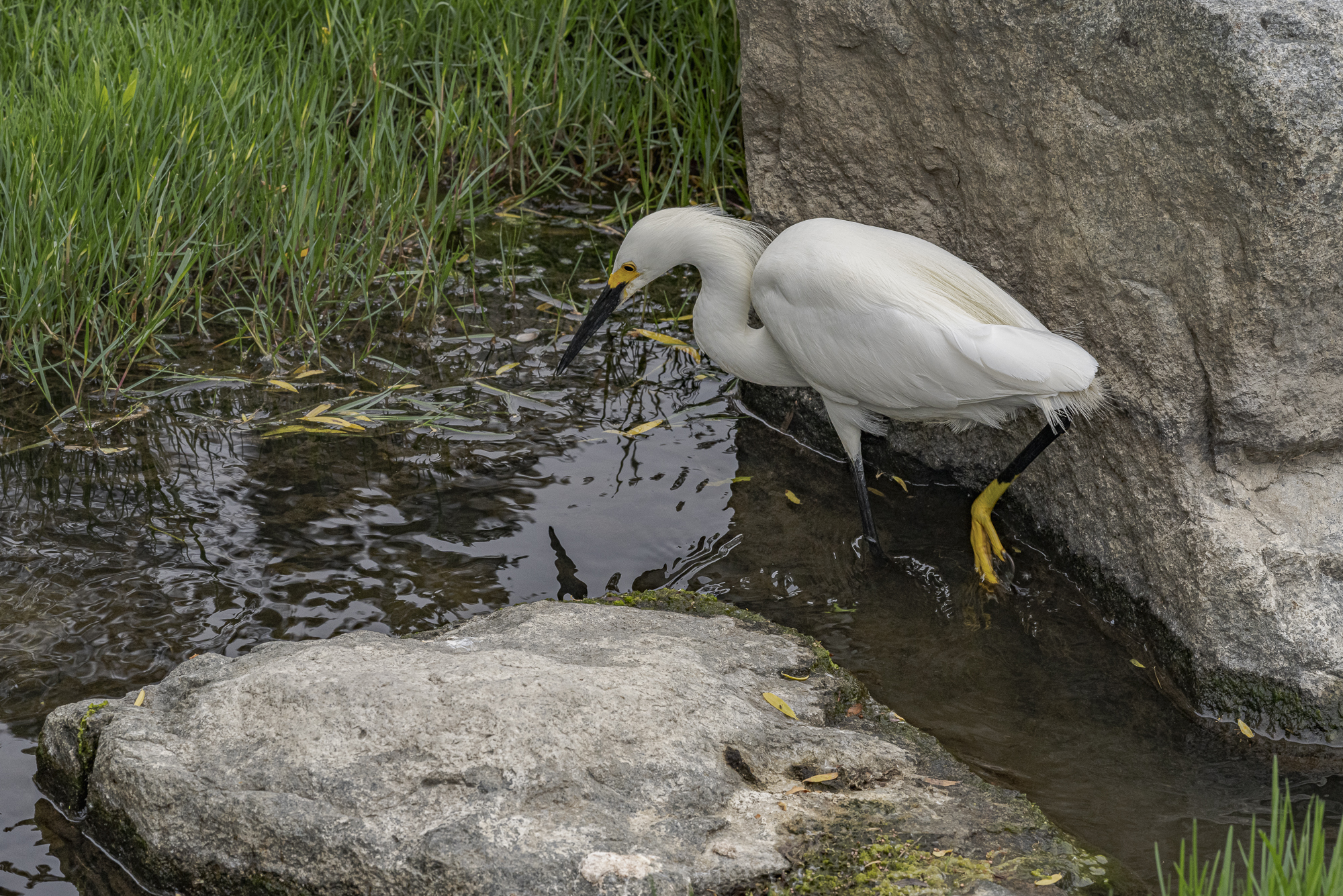
There is a similar park in the City of Cottonwood, AZ, near Sedona. It is part of the AZ State Park system and includes three lagoons fed by the Verde River. The lagoons are stocked with fish that feed local waterfowl and a pair of resident Bald Eagles. I have yet to capture an image of the eagles taking a fish. But the occasional Blue Heron will do.
![Blue Heron, Dead Horse Ranch State Park, Cottonwood, AZ]](https://photopxl.com/pxl-content/uploads/2024/04/CityScapes-104.jpg)
Sandhill Cranes are a large, impressive bird species that is part of the annual north-south migration of large waterfowl. An estimated one million cranes alone participate in this migration cycle every year from Alaska and Canada in the North to Mexico in the South with a number of intermediate stops enroute. This large number has been bolstered by feeding programs supported by the government at all levels and by farmers and landowners as well. The Bosque del Apache National Wildlife Preserve is an important feeding and sheltering location in Southern New Mexico. But lately, landowners along the Rio Grande River in Albuquerque have been providing grain and water for these birds in the Fall attracting up to 1,000 of them each year.
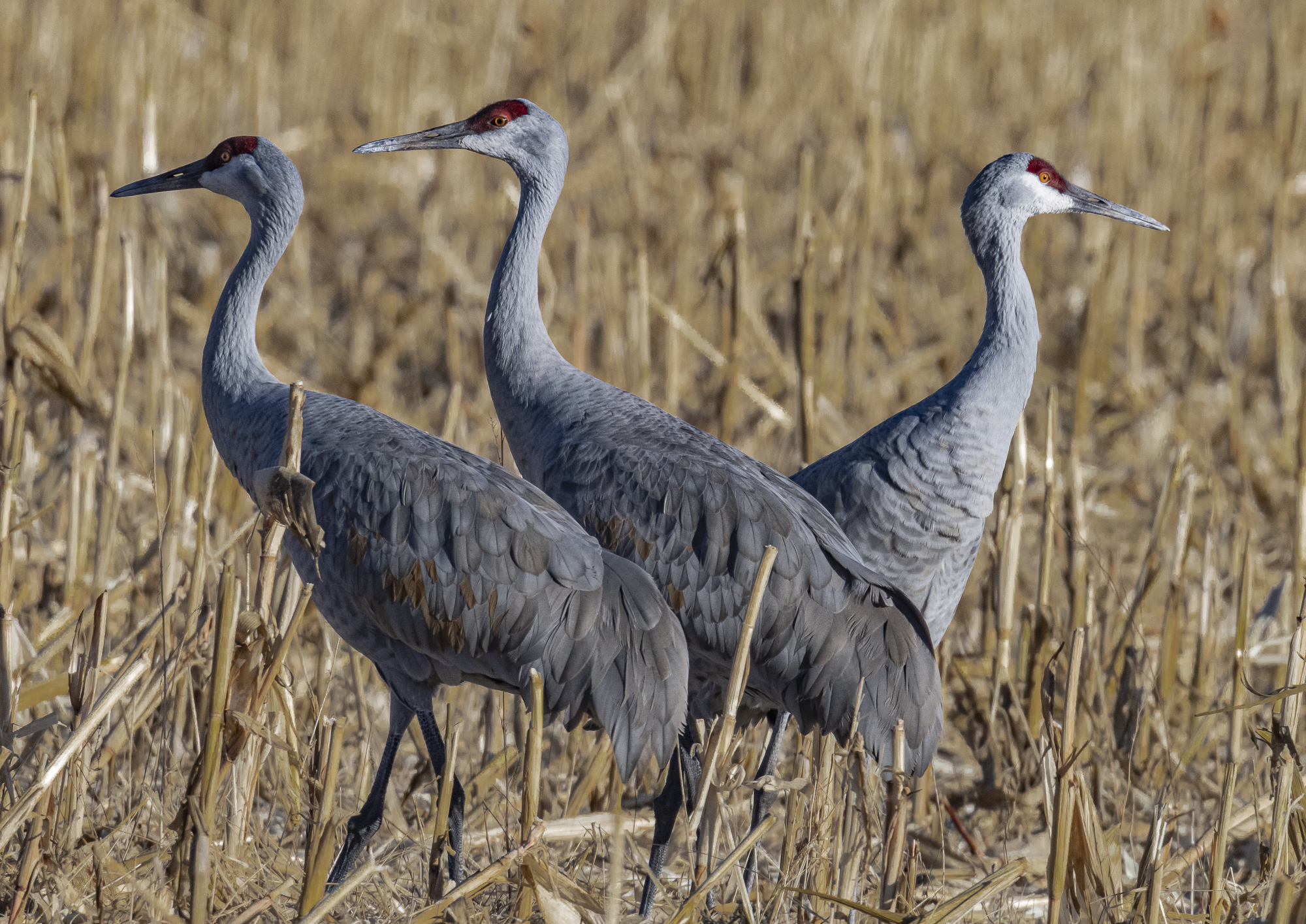
There is another interesting bird phenomenon that has been gathering steam in the next state over – Arizona. It is not certain when this phenomenon started. But at least two or three decades ago, the first Peach-Cheeked Lovebirds – imported from Africa to Phoenix as pets – escaped into the Sonoran Desert and were resourceful enough to survive. These escapees achieved critical sustainable levels and established viable colonies throughout the greater Phoenix Valley.
I first saw them in Mesa in 2016 while photographing wild horses along the Salt River. In 2019, I saw eight Lovebirds at the Wigwam Resort in Goodyear (west of Phoenix). In August 2023, my wife and I photographed a flock of almost 50 Lovebirds again at the Wigwam Resort. They are thriving and expanding their territory against all odds – mostly in urban areas where they can find water, food, and shade.
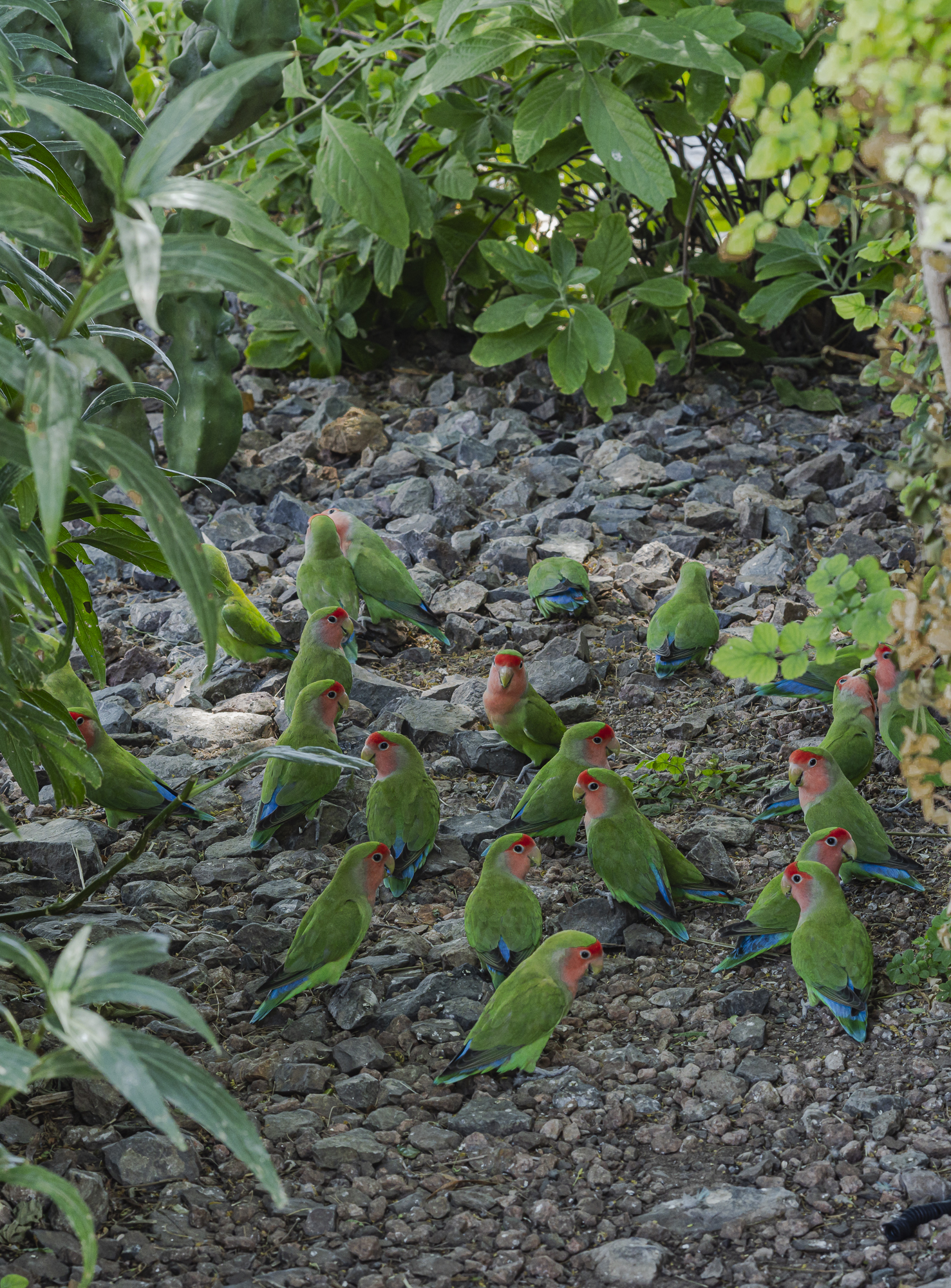
And talk about birds adapting to city life, this Ladder-backed Woodpecker became a regular customer at my Hummingbird feeder.
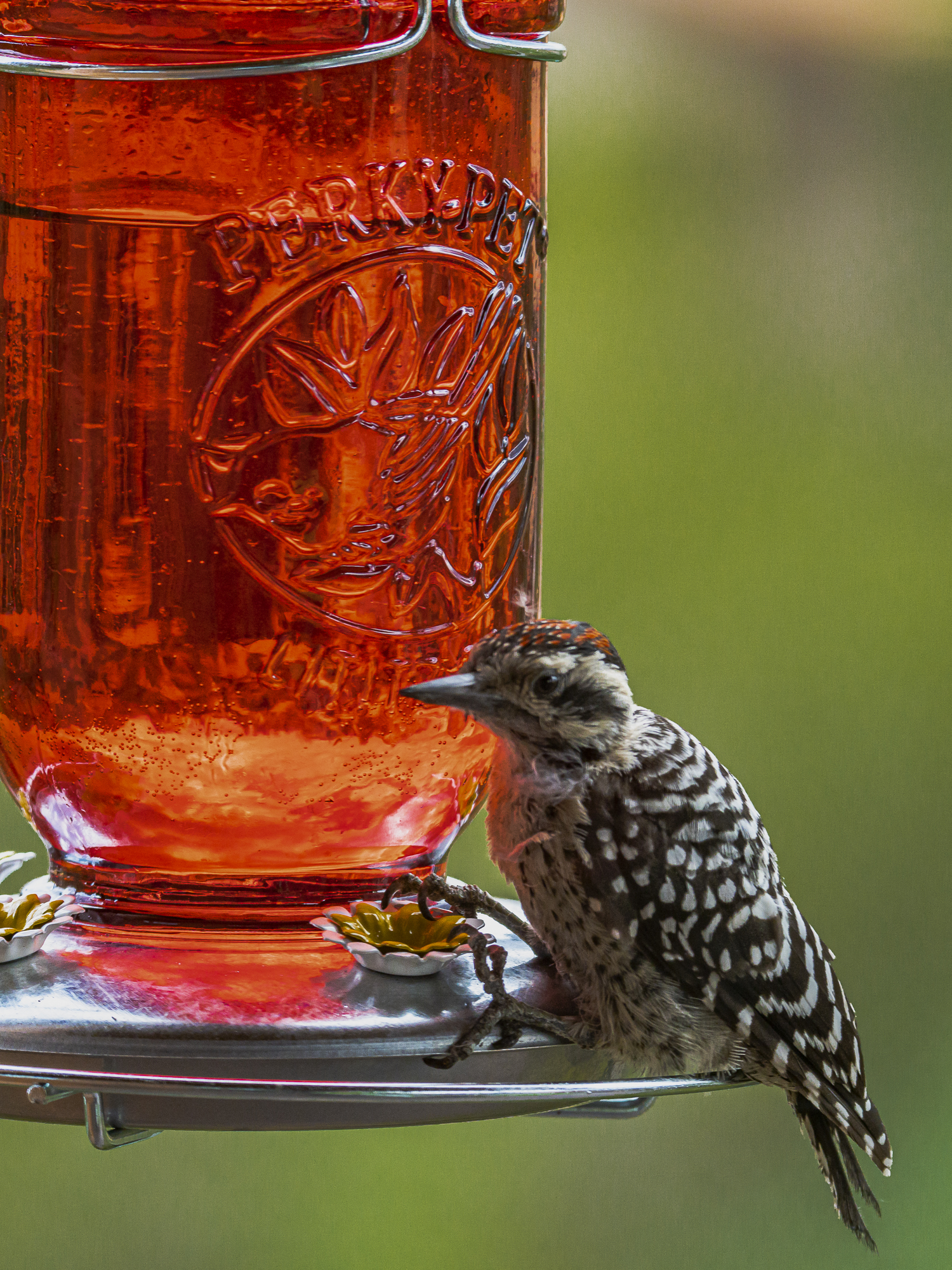
Perhaps the most famous two birds in Northern California at any given time are the latest pair of Peregrine Falcons to nest and raise chicks in the Berkeley University landmark known as Berkeley Tower. My two grandchildren graduated from there two years ago giving me periodic opportunities to witness their spectacular hunting skills. But I was never there at the right time. Peregrines dive down on their bird victims from great heights and reach maximum speeds as high as 320 mph. Living in a tall tower makes their hunting efforts easier. Well, at least I photographed the tower.
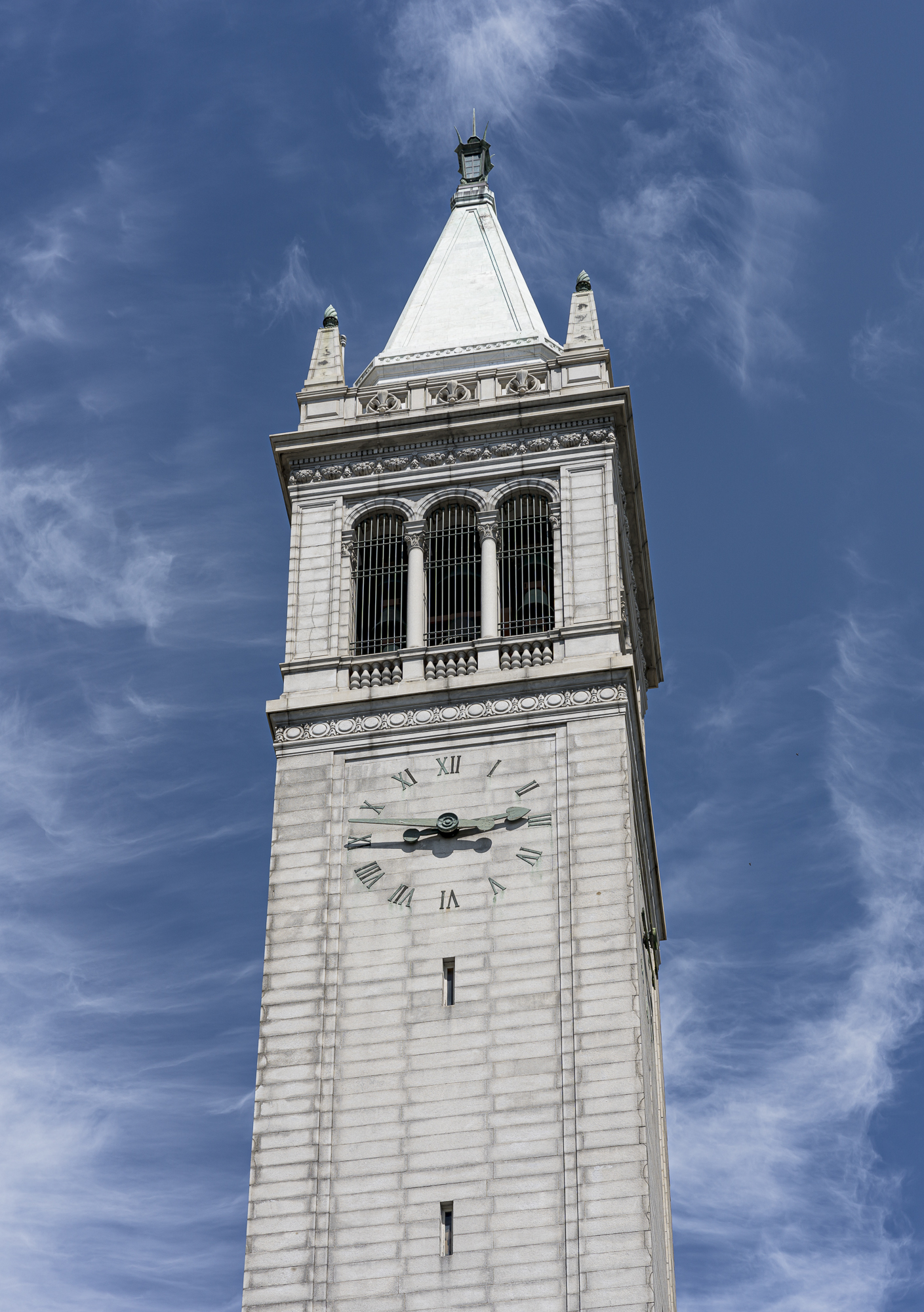
Well, that takes care of the birds. Now for the bees. They do make very interesting subjects. The following image was taken in my front yard, where there are six Lavender plants. During the first COVID outbreak in the USA, I noticed six native Bumble Bees gathering pollen from the Lavender and photographed them, deciding to repeat that the next day when my planning and reflexes would be improved. When I returned, I saw that a dozen Honeybees joined the harvest. I noticed that they avoided any bloom that was occupied by a Bumblebee. Given that they were one third the size of their competitors, this was wise. As I was shooting close-ups with a 110 mm APO-macro lens in a fast-changing scene and needed a smaller aperture for increased depth of field, the obvious solution was to use a tripod. But that eliminated much-needed mobility. So, I shot handheld and sacrificed some depth of field, thereby requiring optimal camera position, fast reflexes, and a lot of concentration.
I picked out one unoccupied bloom and manually pre-focused the lens, and then waited for a bumble bee to arrive, which it did 10 seconds later. I was about to shoot when I saw this Honeybee flying toward the same bloom. From the direction in which it was flying, I realized that it couldn’t see the Bumblebee on the other side of the bloom. I waited until it was about to land, and just as one leg touched down, it noticed the bigger bee an inch away. I squeezed the shutter button just as it quickly reversed direction to avoid a confrontation .
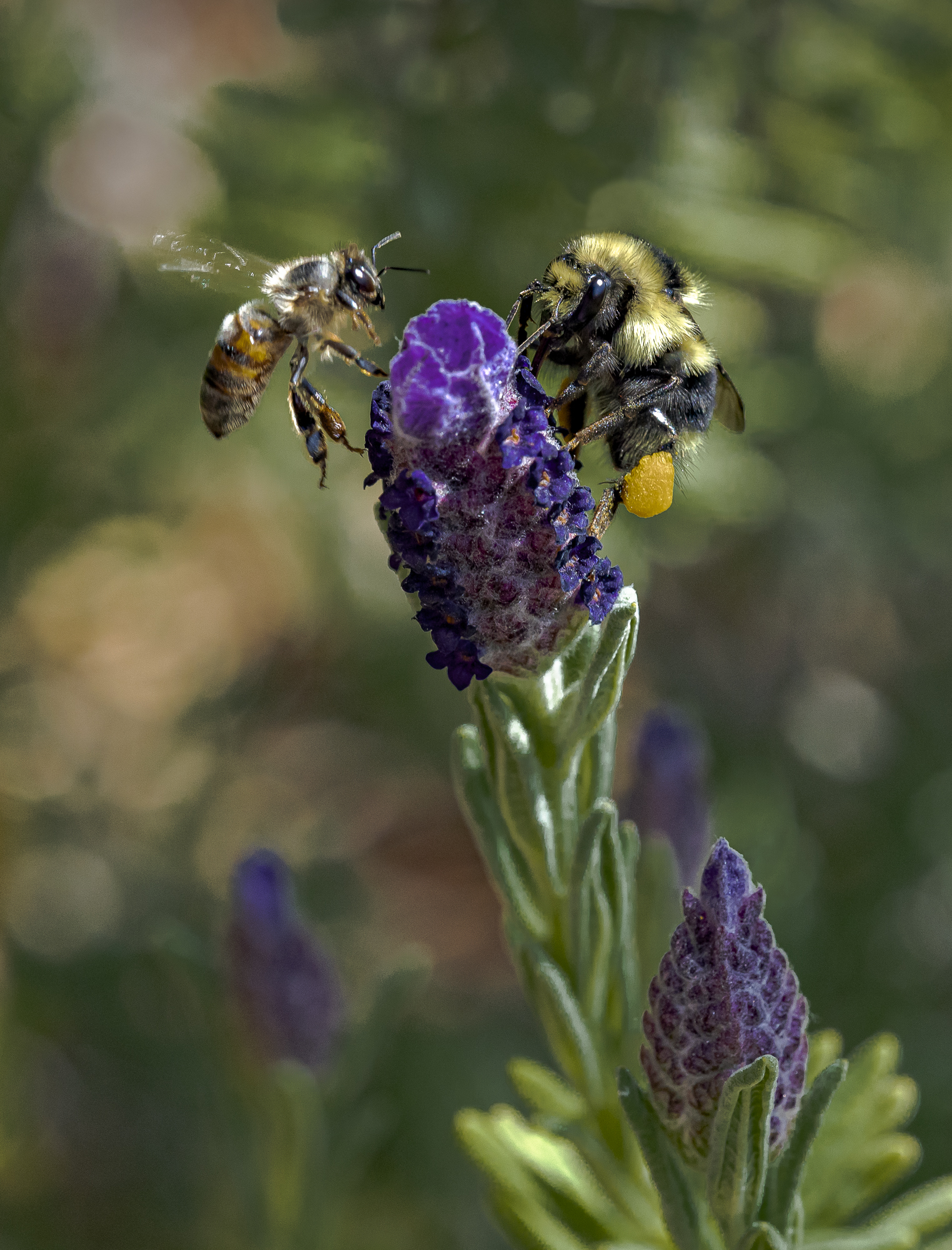
One more interesting insect showed up on my driveway one September morning: a large female Tarantula looking for a meal. She didn’t feel threatened by me, so I took the following close-up:
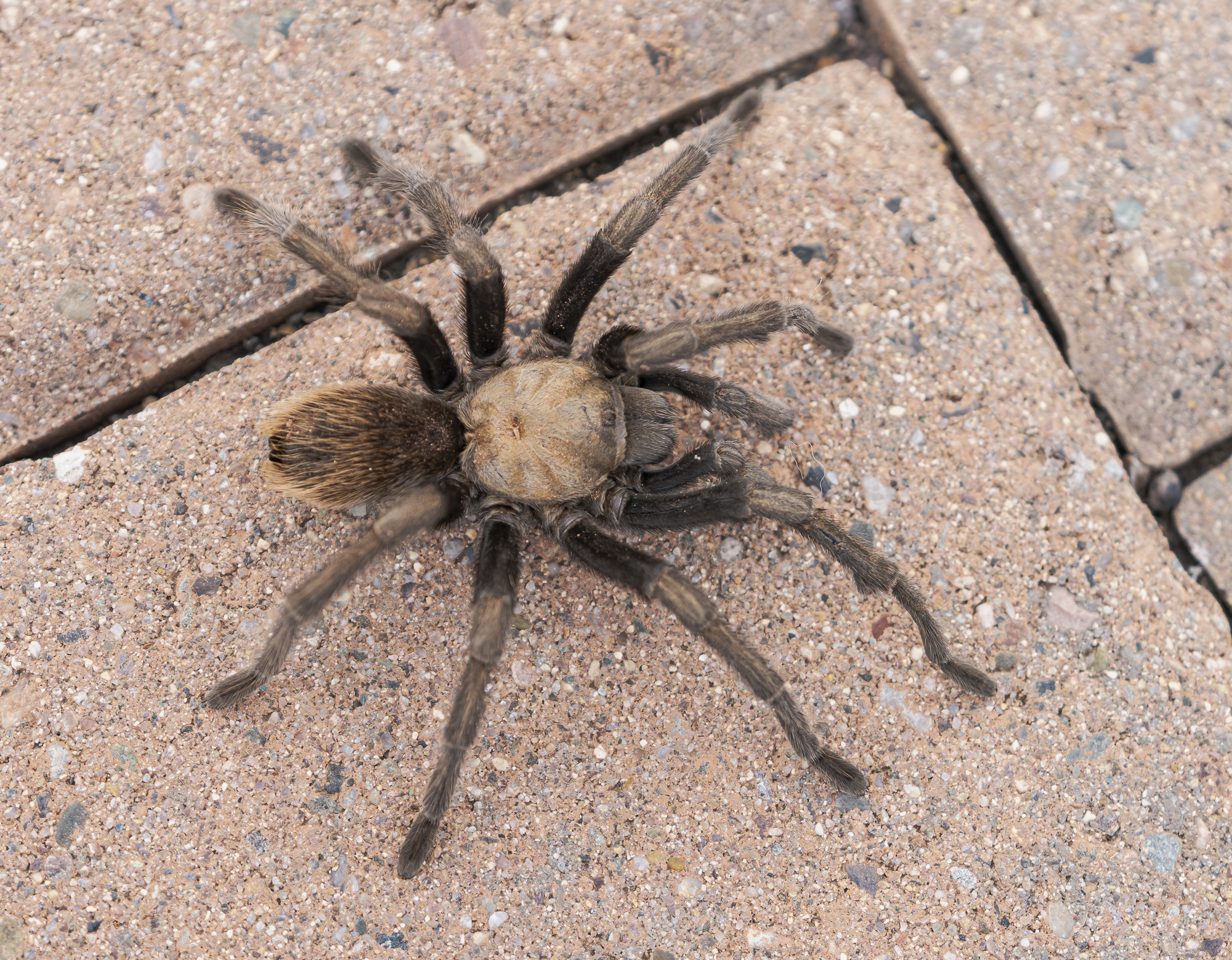
Interesting reptilian critters can be found in cities on the edge of open space.
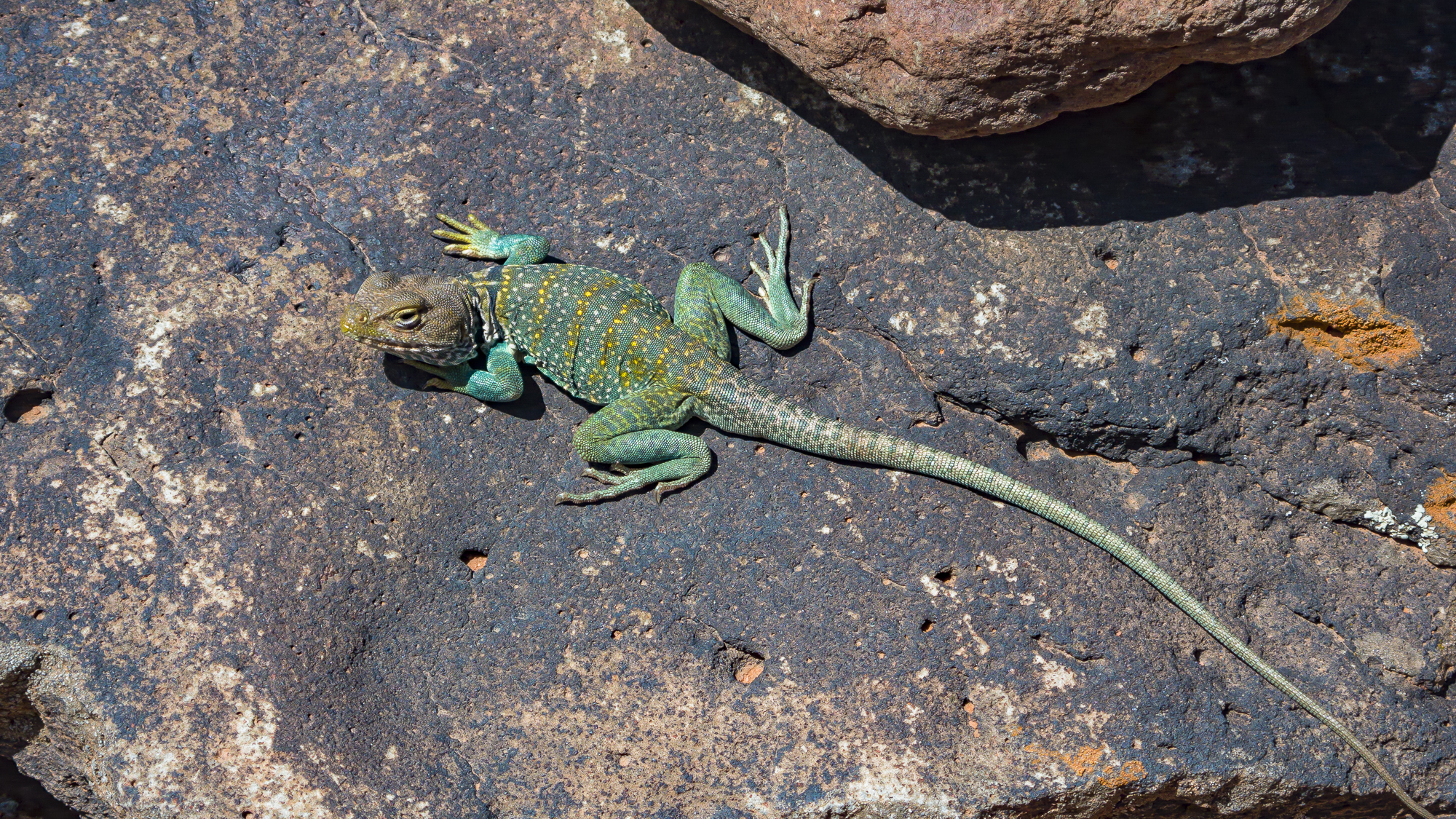
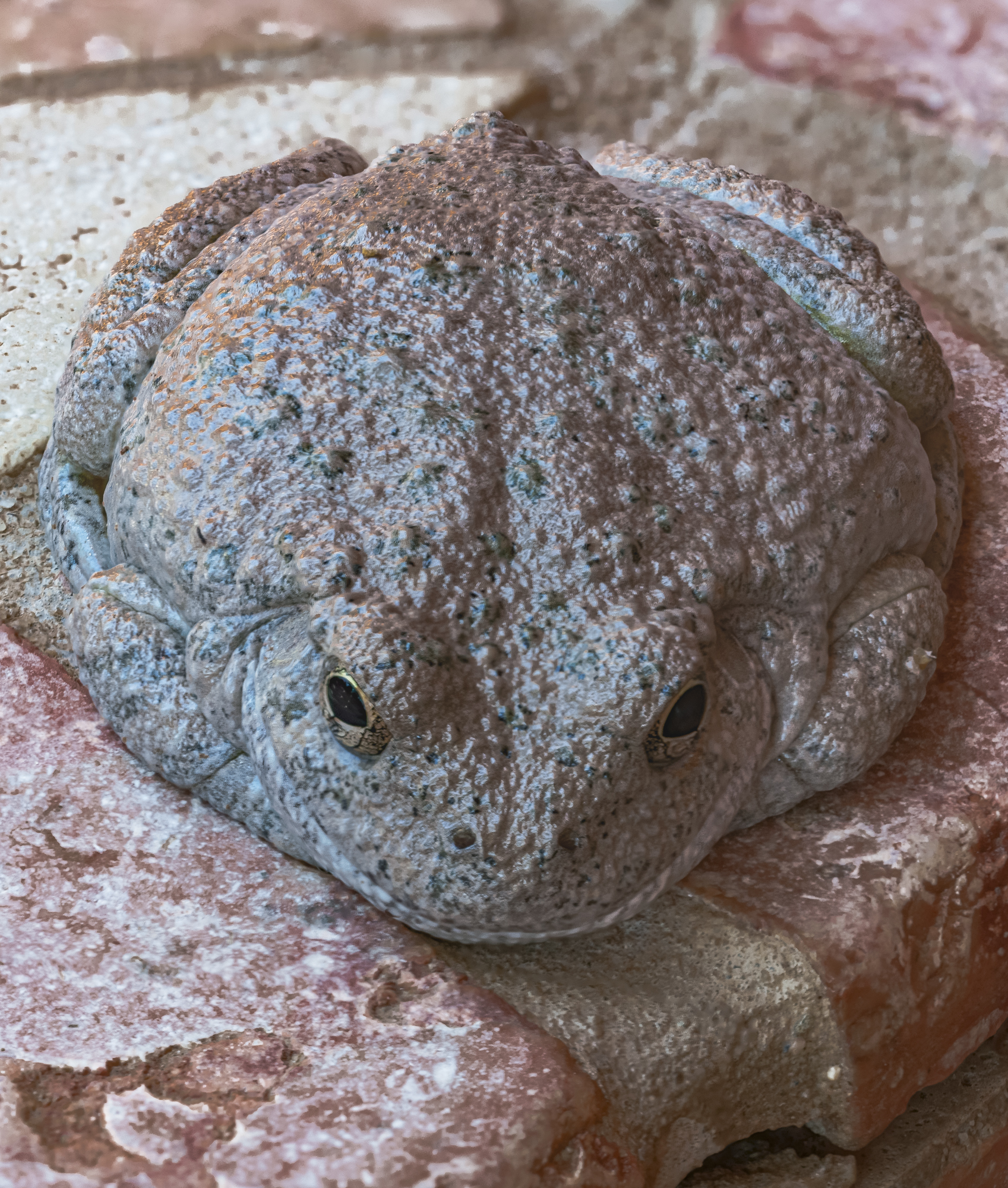
The above image is a stacked-focus image that retains the sharpest pixels from each exposure to produce overall sharpness in the final image.
The last image is of an Arizona Black Rattlesnake taken on the street behind my house. Though poisonous like all rattlesnakes, this variety is non-aggressive, and will move away rather than attack. Hidden behind the curb, my wife and dog almost stepped on it as they crossed the street. Fortunately, the snake didn’t strike, and I went over to photograph it a few minutes later.
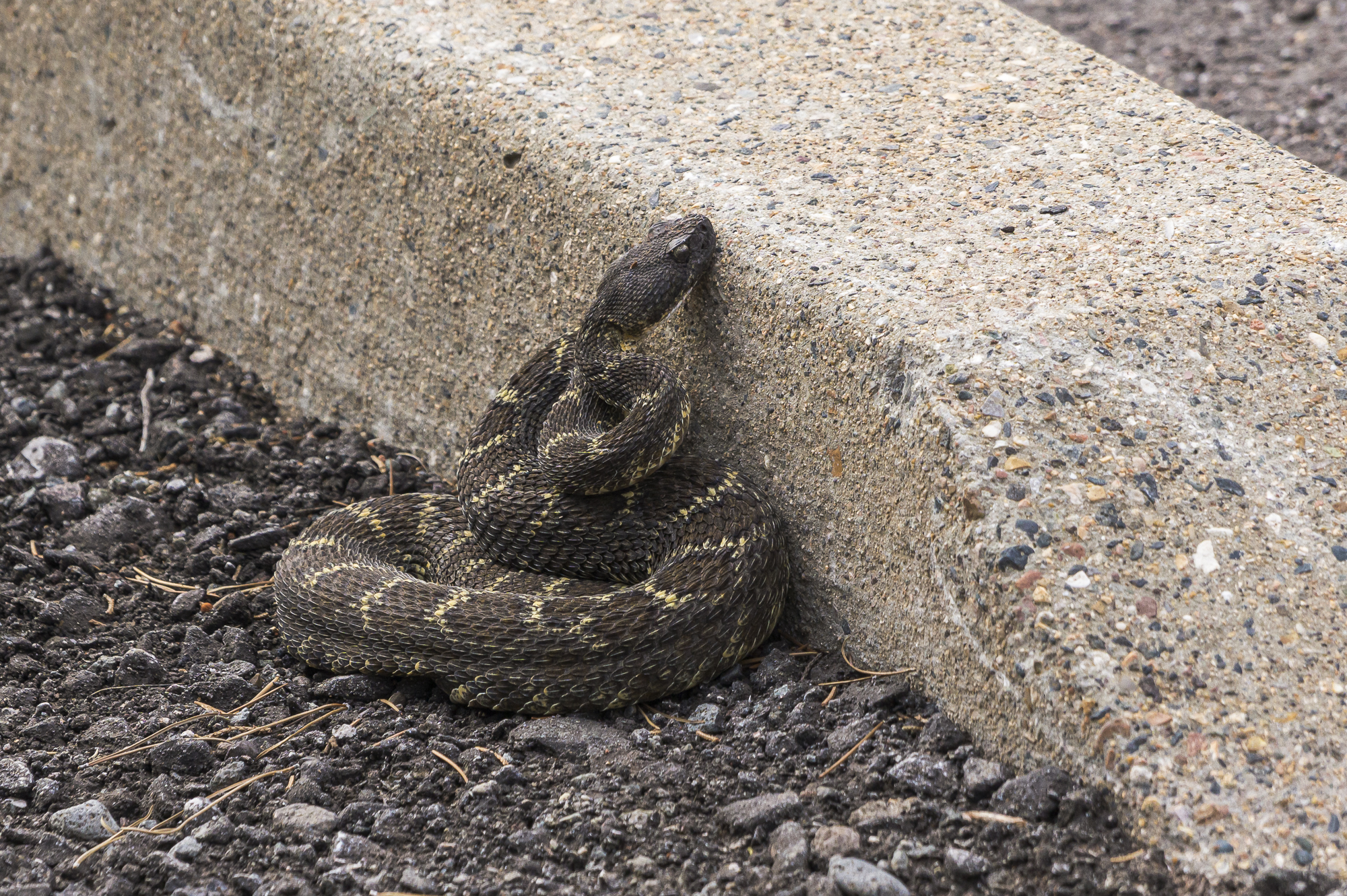
There is also a wider variety of mammals that thrive on the fringes of cities and towns than commonly seen. For coastal cities, this includes seals and whales that swim near shore and into harbors, lured by food discarded by human activity.
The city of Newport OR built several floating structures in their harbor to give migrating California Sea Lions platforms to rest on. Most of the visiting seals are younger males who will return to Northern California to mate.

Harbor Seals are so named because of their practice of hanging around docks filled with people and asking for treats.
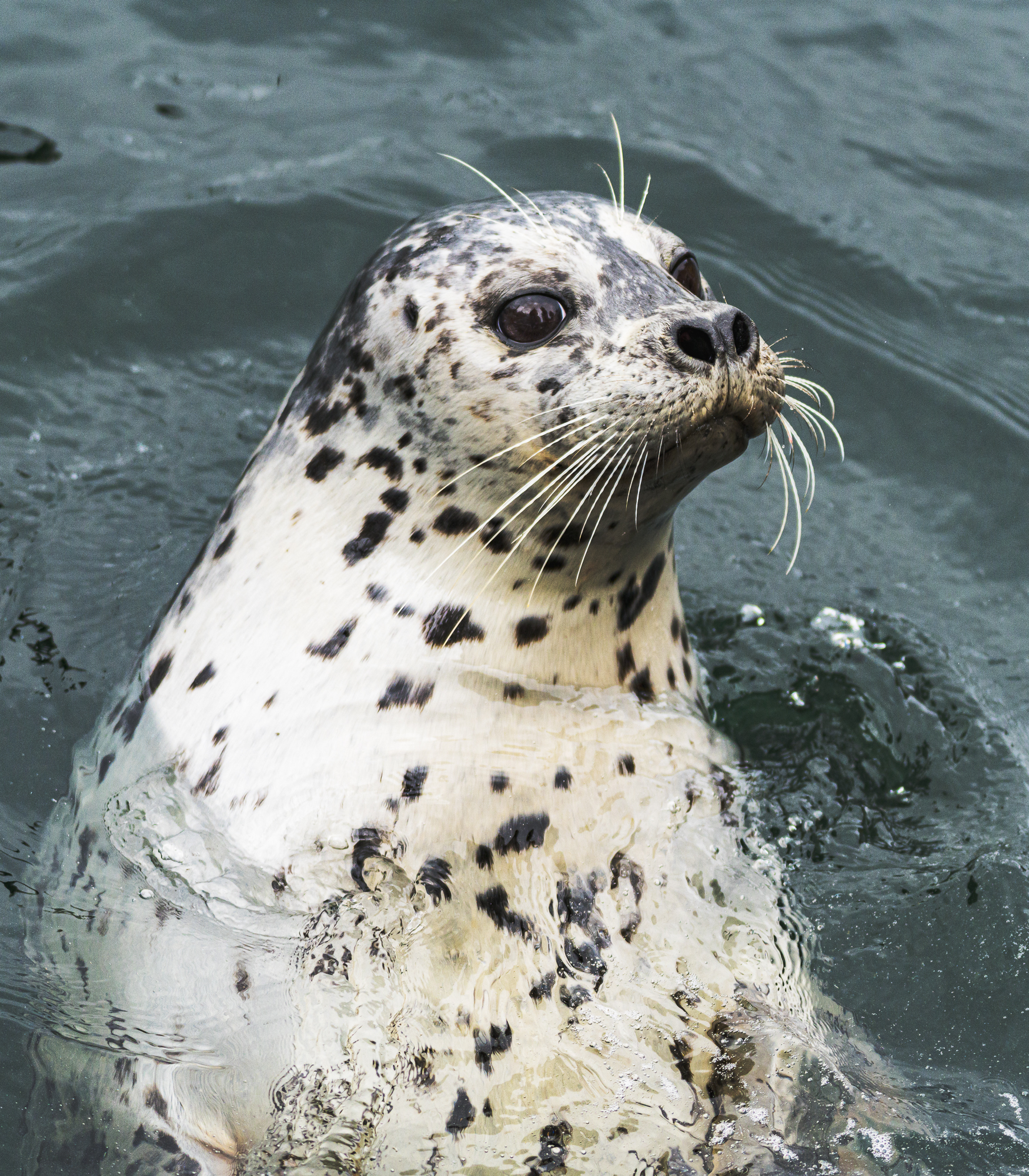
Whale-watching day cruises are popular with tourists in cities and towns on the American west coast, and in Victoria, B.C. In the latter case, most of the cruises take passengers to see nearby Orca (“killer whales”) that regularly swim in the channel between Vancouver Island and the San Juan Islands. Many Orcas are now seen close to shore in that area.
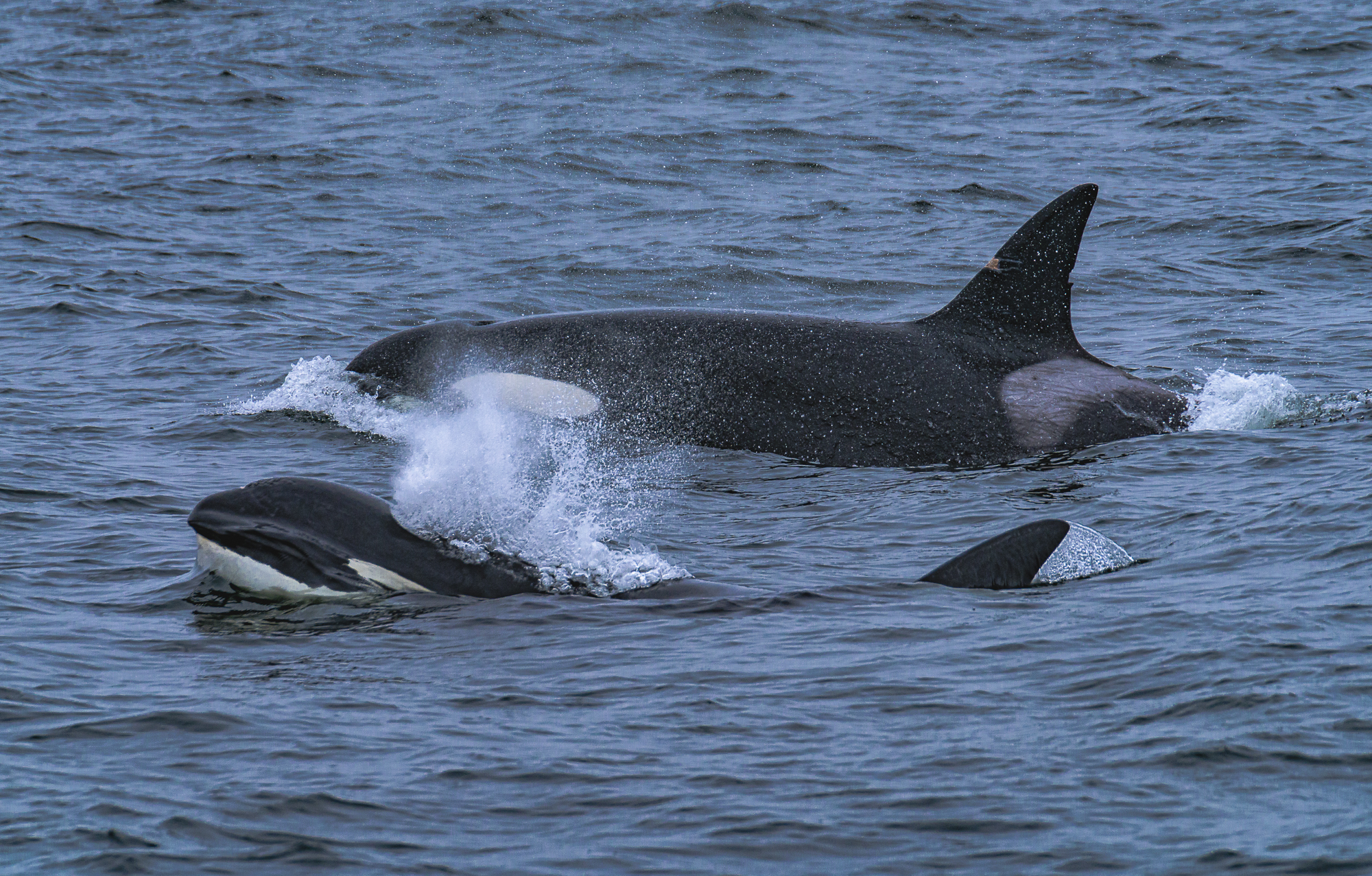
So, now we move on to land-based mammals. It turns out that we have a good representation of those who live comfortably on the edges of many cities and towns.
In Arizona and New Mexico, we have a pig-like mammal called a Javelina. However, it is a Peccary that is distantly related to wild boars but fits in a different slot. It has a pig-like head with several teeth that resemble tusks. Unlike a wild Boar which can weigh up to 900 pounds, Javelina males rarely exceed 85 pounds. They travel in herds of six to nine members, though two herds will often merge in areas where the young might be at risk.
The following two images are of an adult male, Javelina, and a “caravan” of 13 adults and young as these animals were moving from one location to another. They can be aggressive and dangerous when their young are threatened and, therefore, have an instinctive dislike of dogs. As they have poor eyesight they rely on sense of smell. It is always best to stay out of their way, although they have no problem tearing up ornamental landscaping to get at their roots. I’ve had groups of five to six grown Javelina on my front patio twice in the last three years.
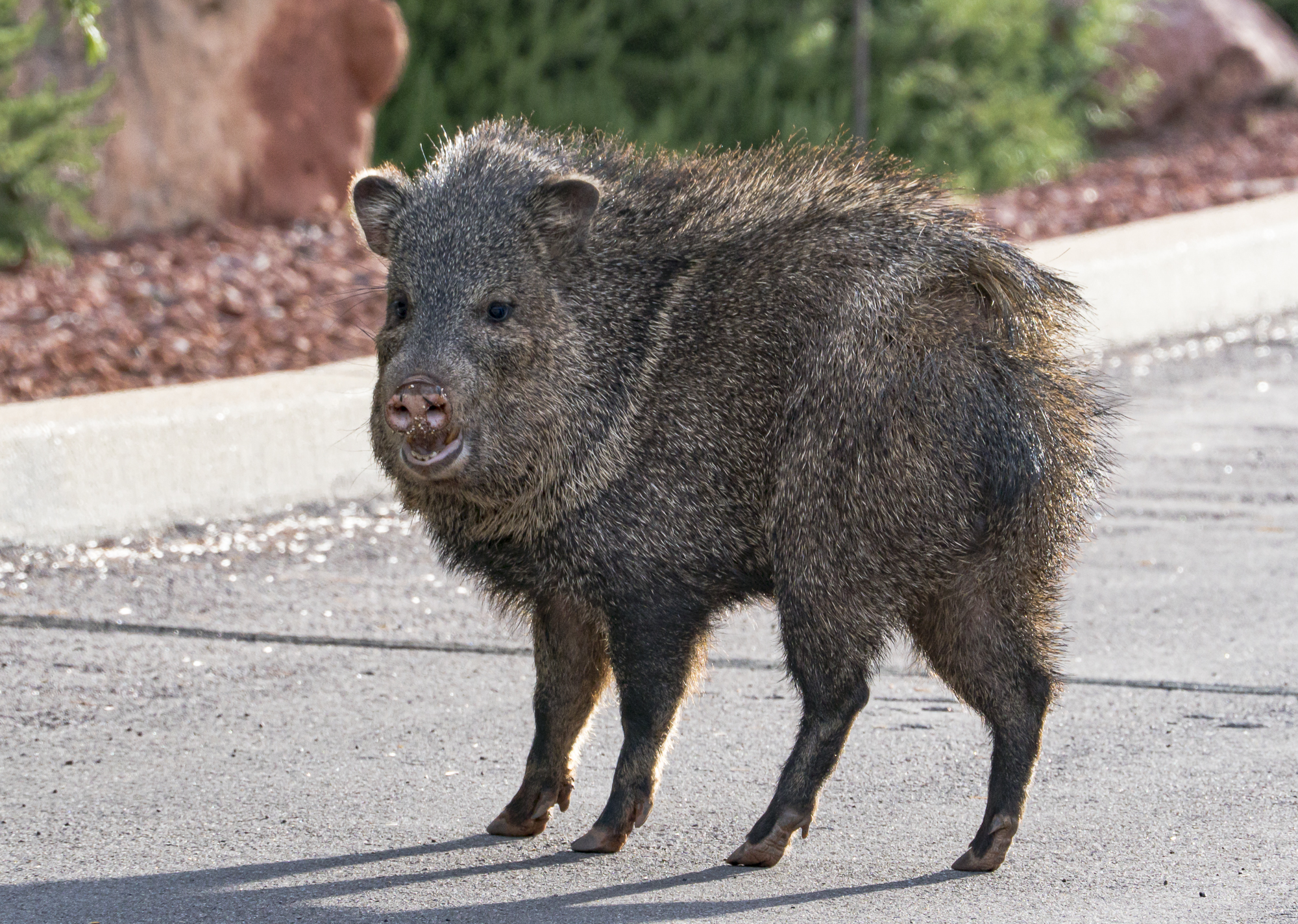
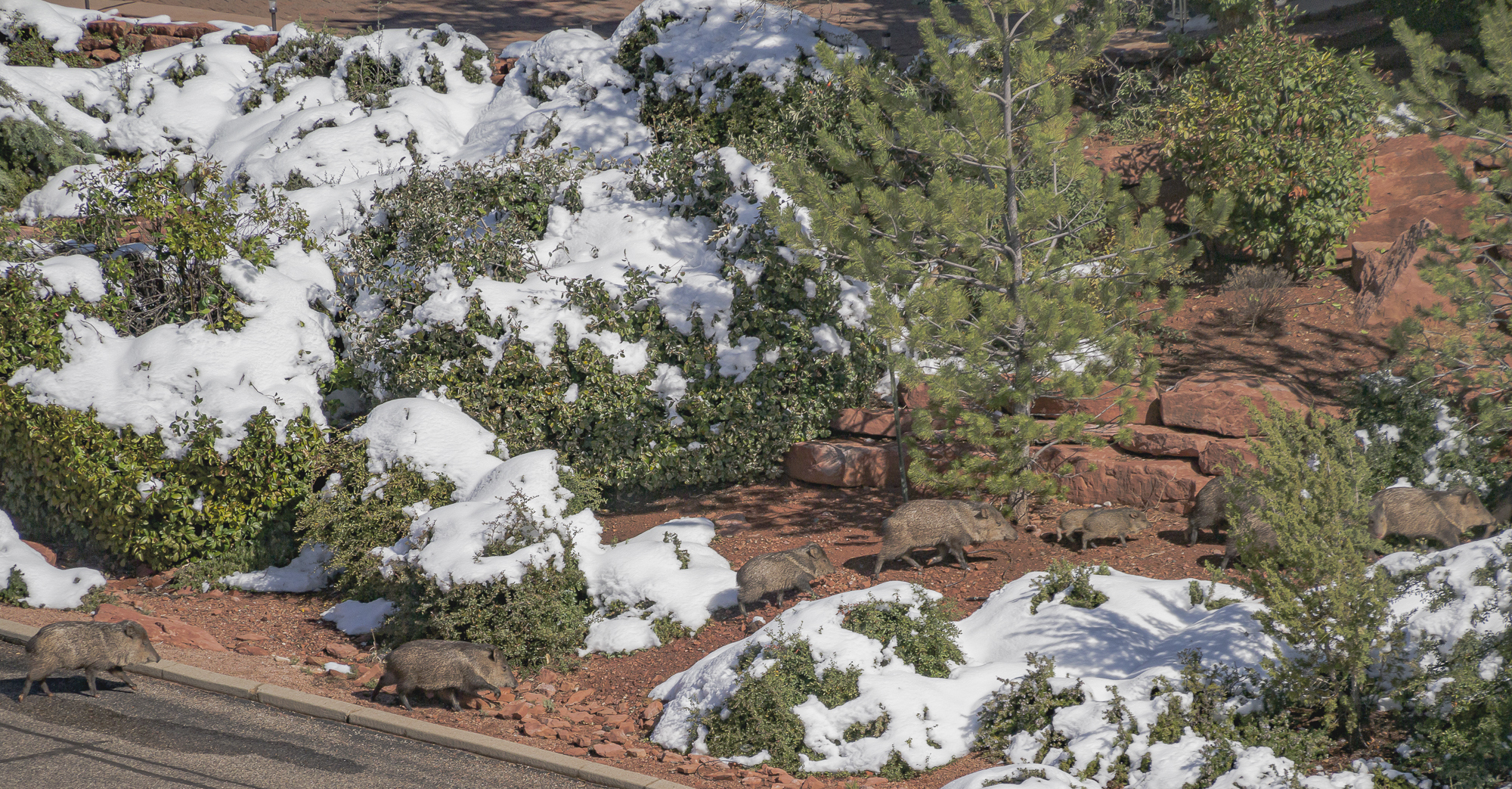
Coyotes also live on the outskirts of cities throughout the USA as they follow rodents that feast on human-grown plants and garbage.
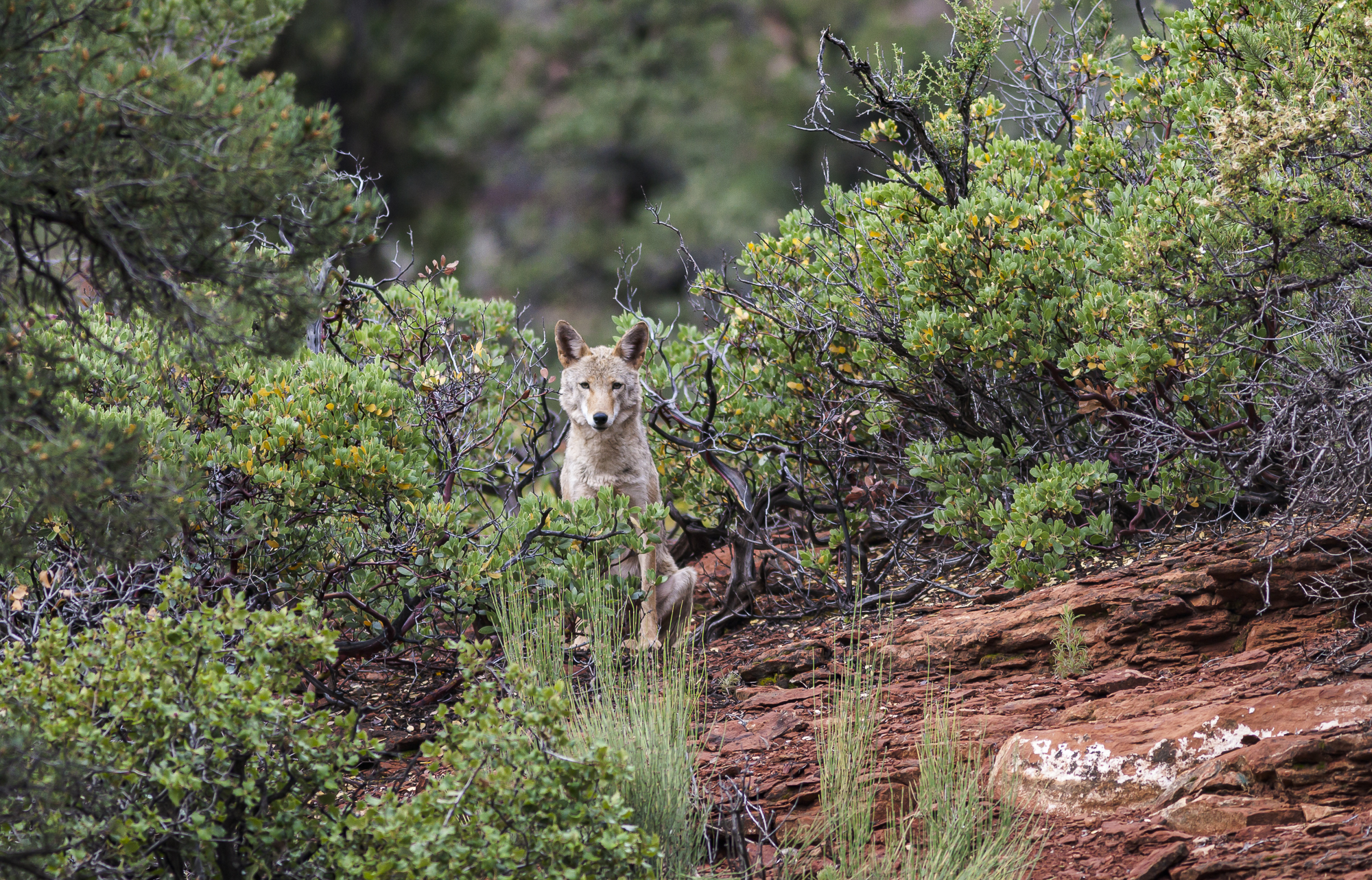
I have watched at least five generations of Mule Deer grow up where I live in Sedona next to National Forest land. Some of them tolerate my photography.
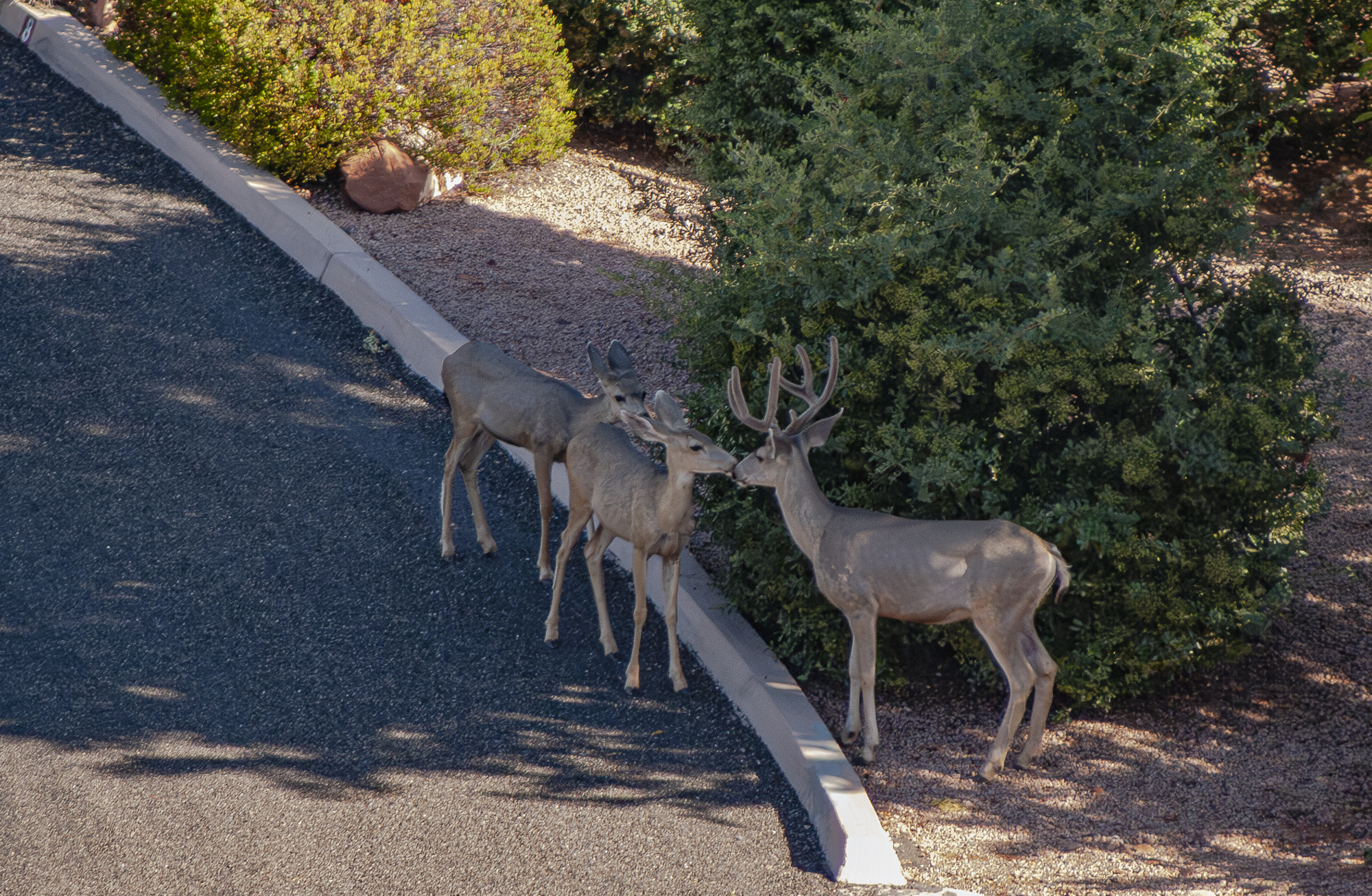
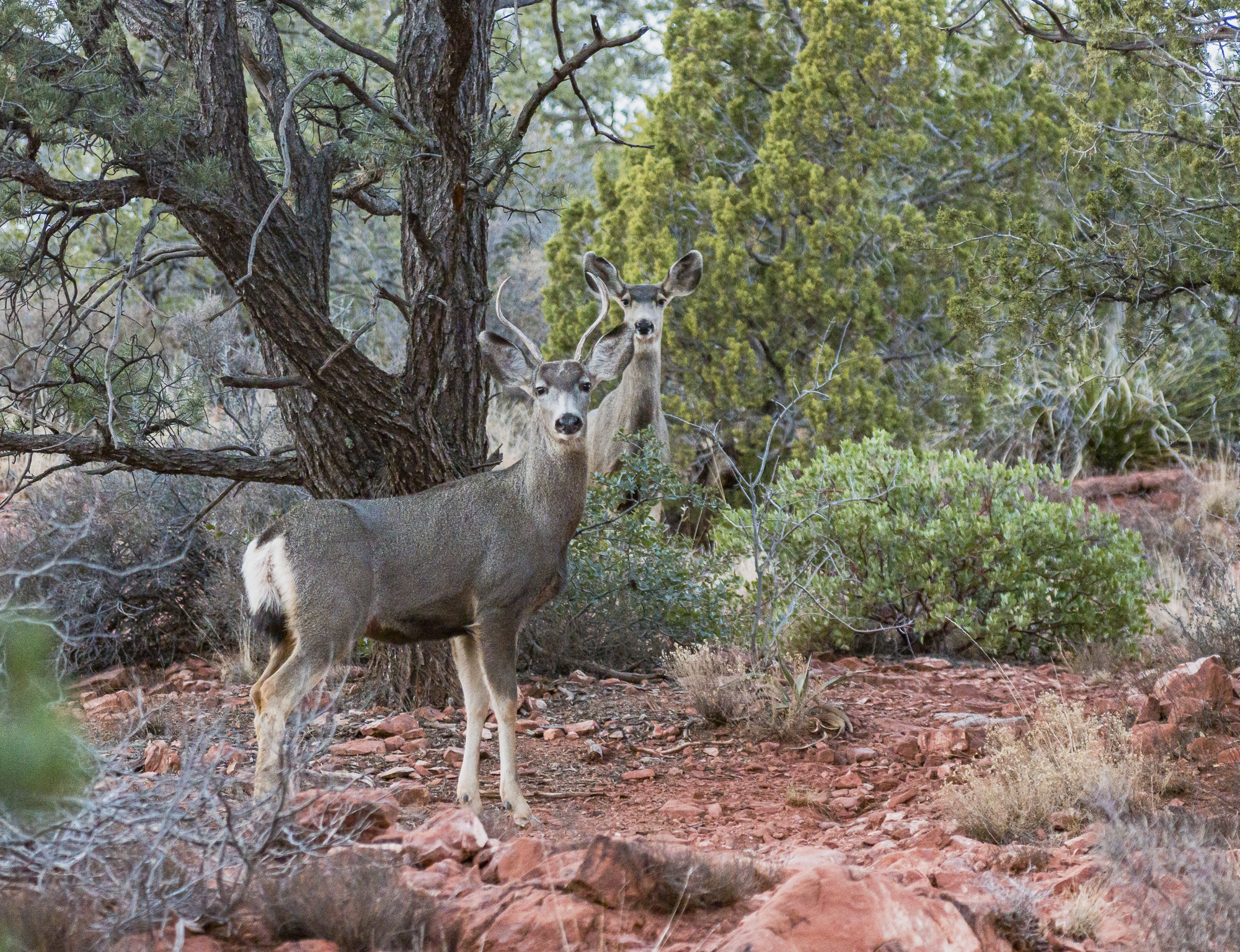
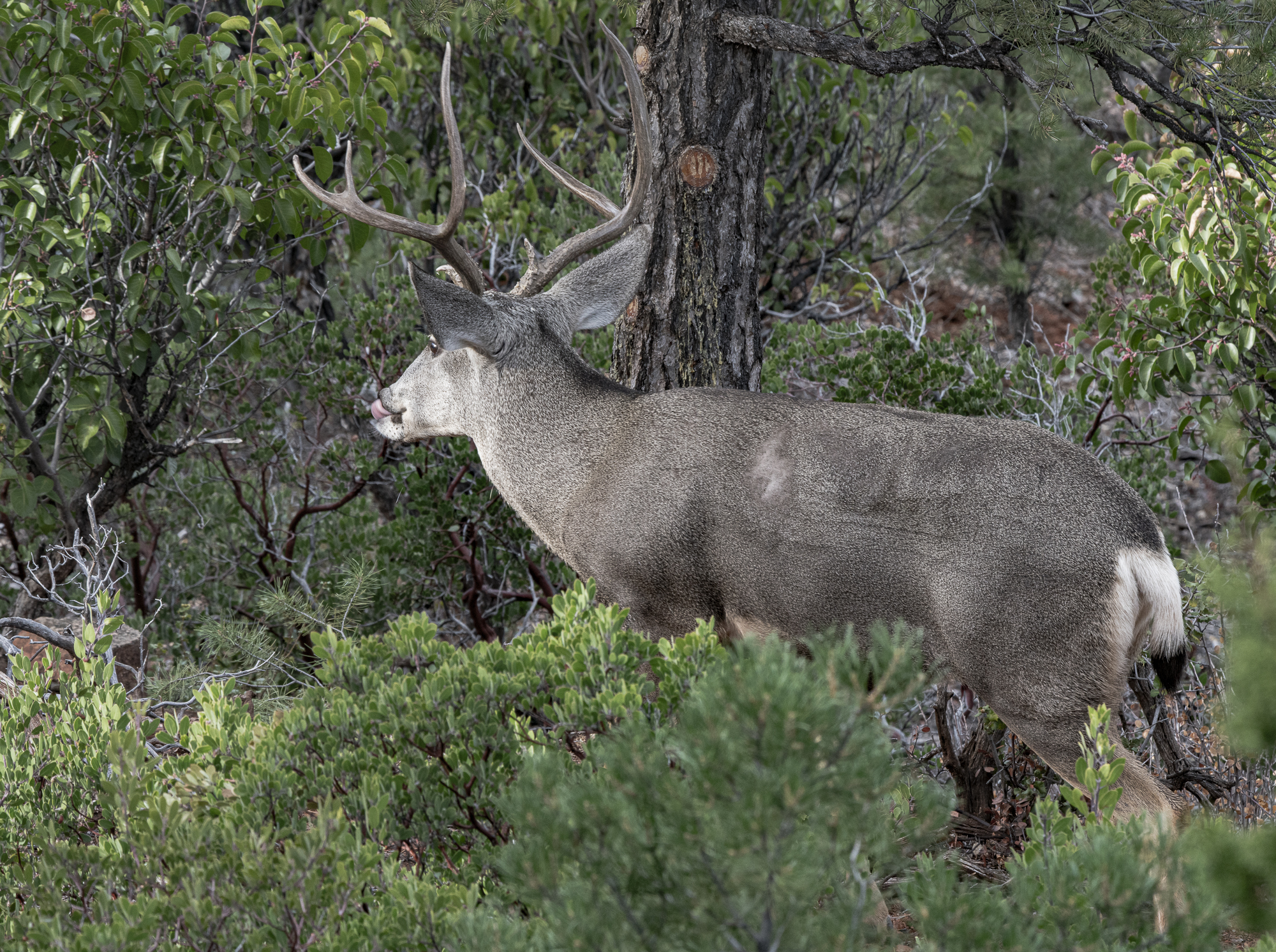
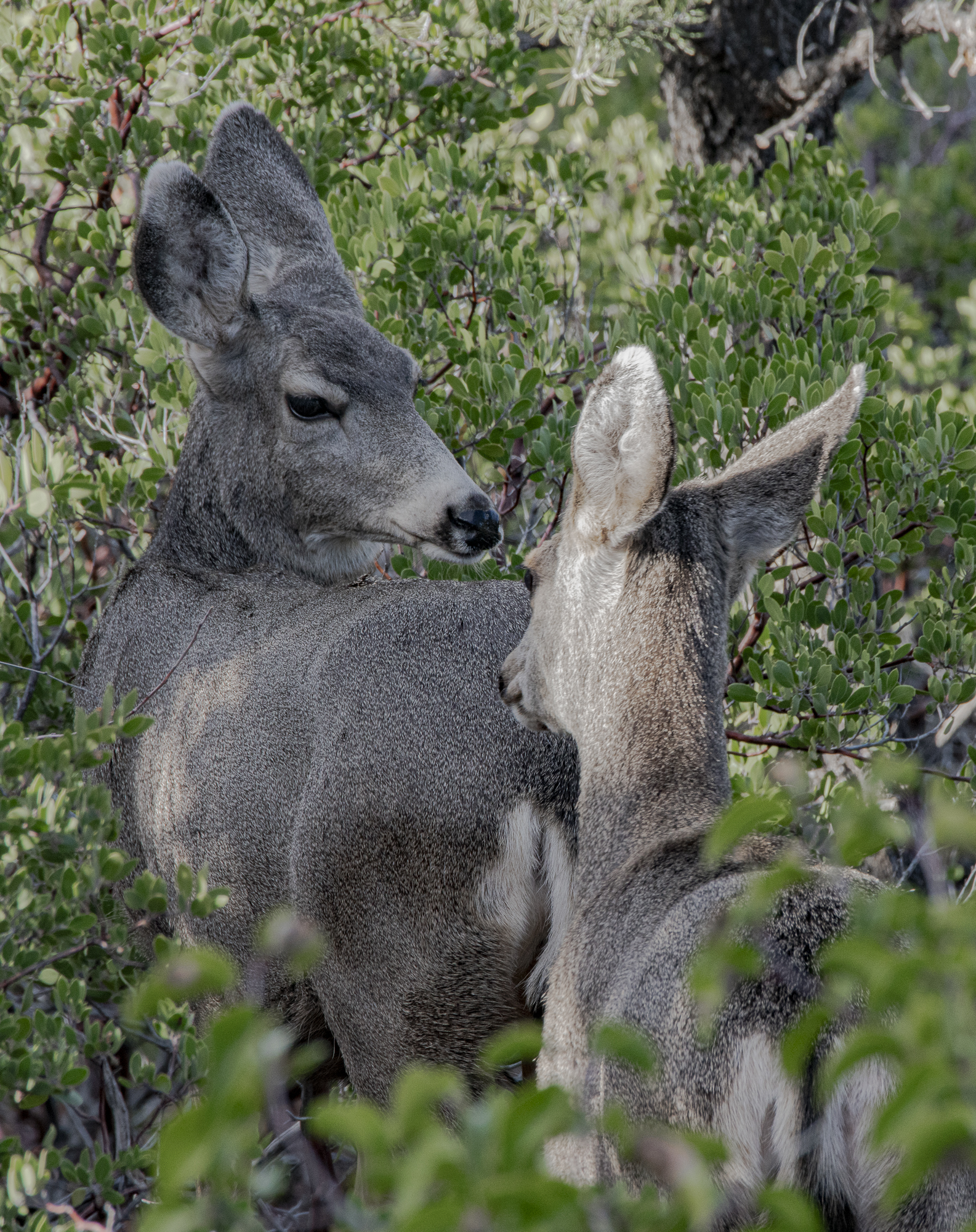
I took the next Image while having dinner in the Red Rocks resort which overlooks the Garden of the Gods Park, and the foothills and mountains behind. The sun was beginning to set causing flare. This mature stag and other Deer frequently come to the resort grounds toward day’s end to drink and eat leaves and flowers.

In Durango, Colorado, a small herd of deer fight city traffic to graze on manicured lawns.
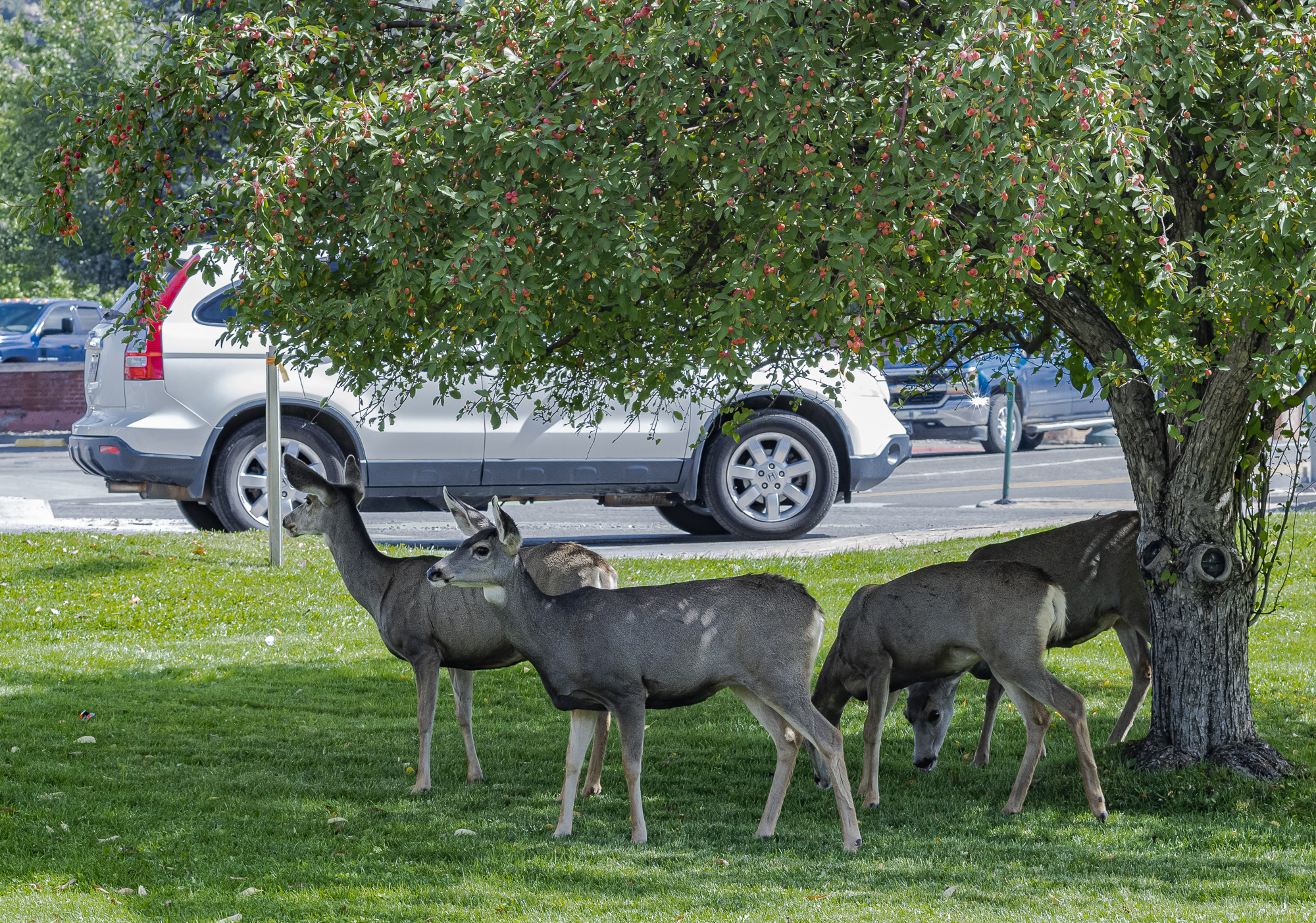
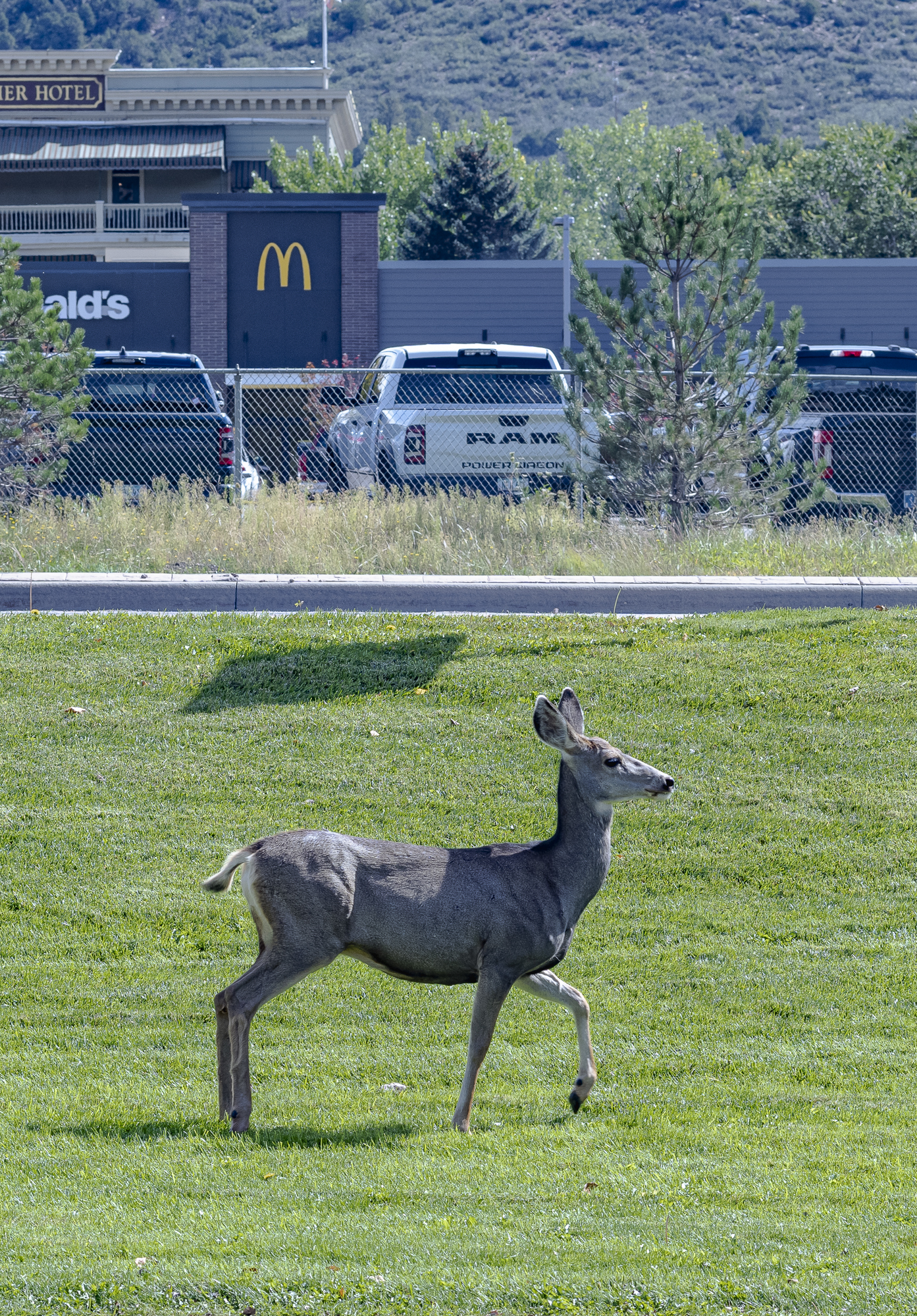
Well, maybe some wildlife isn’t quite that acclimated to city life. But it is amazing to see normally skittish deer willing to navigate cars and trucks zipping by on major arterial roads to graze on green lawns. So, urban wildlife is a legitimate photographic category and one that’s more commonplace over the years.
—
This set of six photo-essays is dedicated to those Nature photography enthusiasts who at times find themselves confined to city limits but need a ”photography fix”.
Harvey Stearn
April 2024
Sedona, AZ
To see the scope and essence of Harvey Stearn's photographic art please visit www.CameraStops.com. Mr. Stearn began photographing Western landscapes and wildlife at the age of 13, spent 50 years pursuing his passion in the field and in the darkroom before fully converting to digital photography in 2002. He developed color prints as well as monochrome, but switched over to digital capture and editing in 2002. Though he was a top executive for two large scale land development and home building corporations, he always found time for his fine art photography which won many awards. His work was exhibited in art museums in Southern California and Arizona, and was also featured in billboard advertisements and published in magazines. Mr. Stearn served on the California Arts Council for nine years, including two years as Chairman and another two as Vice Chairman. In addition, he was the founding Chairman of the John Wayne Airport Arts Commission in Orange County, California. Mr. Stearn’s work was sold through Arizona galleries for 15 years. In recent years he wrote 33 illustrated articles for PhotoPXL.com and 14 articles for Luminous-Landscape.com. In 2013 he published a book entitled “In Search of the Old West” which has been widely acclaimed. He was a guest lecturer on photography on a cruise ship visiting Chile, Argentina, Uruguay and the Falkland Islands. His work was among the top 100 images printed in NANPA's Showcase publications in 2019 and 2020. Images have been edited and selected for two new books on Landscape photography which will be published in late 2024 and early 2025.






